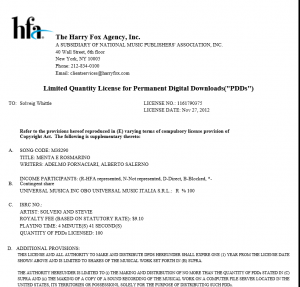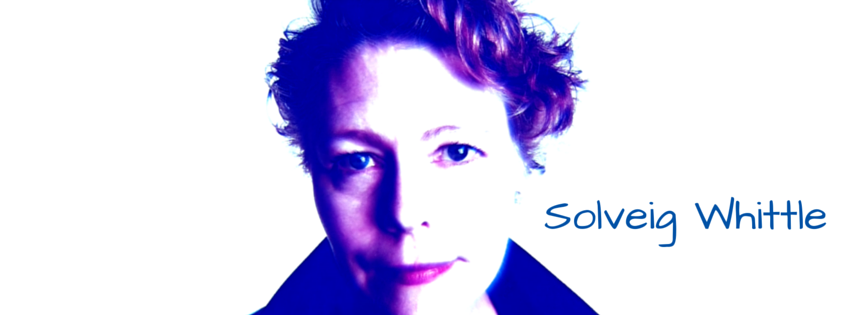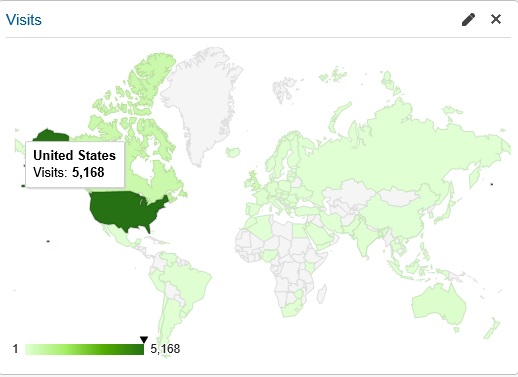Last year I recorded a cover of an old favorite song of mine called Menta e Rosmarino (I Won’t Be Lonely) by the Italian artist, Zucchero (AKA Sugar Fornaciari). He’s a famous singer, songwriter, and guitarist in Spain and Italy. He’s less well-known here in the United States, despite his many collaborations with American artists like Eric Clapton, Joe Cocker, and Randy Jackson, among others. I also hired a friend of mine, Josh Moore, to shoot a music video for my Zucchero cover. All together, I spent a few thousand dollars on making the video, including paying for time at the studio where we shot it and compensating the other people involved.
I thought it might be useful to share a walk through of my relatively cheap and easy experience securing the mechanical and synch licenses for both the audio and video files. As a writer of original music, and also because I spent my own time and money making these high quality audio and video recordings, I felt it was important to comply with the legal licensing requirements. This was not a video of me singing the song by myself with a guitar in the living room in front of my computer’s video camera. Although I thought it seemed unlikely, I didn’t want YouTube to take down my video channel because of this single cover video. Most important to me, however, I feel it’s only right to legally compensate the original artist for their work.
By the time I started the licensing process, I had already posted MP3s of two different versions of the cover song to my Soundcloud account (streaming only, no download, free). I also had created the music video and hosted it privately up on Vimeo (from where it has since been removed). I had not linked it to my website or used social media to promote the video in any way, however, since I wanted to be sure I could secure the appropriate licenses first. Keep in mind that my goal with this cover and the video are not to make money. I have chosen not to monetize either the audio or video version through payment or advertising.
A Basic Overview
By simply Googling “synch license YouTube video” I turned up a very informative post entitled Posting Cover Songs on YouTube: Music Licensing Law Explained on CD Baby’s excellent blog, The DIY Musician (dated March 28, 2012). It was written by Christiane Cargill Kinney, whom I happen to have also met in person last week at SF Music Tech. Christiane is not only a practicing entertainment lawyer in LA who is married to a filmmaker, she is a song writer and musician herself. She’s also a super nice person who is is generous with her time helping other artists understand the complexities of music licensing.
Christiane’s article explained that I needed both a mechanical and a synch license to be able to legally stream this song on Soundcloud and post a YouTube music video of it.
Chris Seth Jackson has also posted an article on licensing cover songs and videos of cover songs on his website, HowToRunABand.com.

Mechanical License For Soundcloud Digital Downloads
The first (and easiest) thing I did was to go to Harry Fox (you can also use LimeLight) to secure a mechanical license to distribute my cover of the song. This was very straightforward, except for where I had to estimate how many copies and in what form I would be distributing the song. Since for now, I am not making any physical CDs with the song on it, it was a bit easier, but I still had to guess how many times people would be interested in playing the song streaming on Soundcloud, and how many digital downloads they might make. It ended up being a very reasonable $9.10 for 100 digital downloads via their Songfile tool. I figured if I needed more licenses, I could always purchase them later.
You can use Harry Fox for whatever digital distribution method you are using (CD Baby, Bandcamp, Tunecore, iTunes, etc.) to sell or distribute your cover, whether you are distributing it for free or making money from it.
Note that Harry Fox also has a new service called eSynch (Beta) available on their website for synch licensing for videos for personal use, but you can’t use it for YouTube or any kind of commercial videos. ASCAP also has an “Experimental License Agreement for Interactive Services” for on-demand performances such as internet jukeboxes or music vidoes, but although the PRO for this song is ASCAP, I didn’t use this service.
Synch License for My YouTube Music Video
Following Christiane’s suggestions, I pursued the synch license for my music video next, by approaching the license-holder directly. There are a couple of different ways to identify which music label or other license-holder to approach to get a synch license. If you have already posted your video to YouTube, you will be notified of the license holder’s information fairly quickly through YouTube’s Content-ID database. Your mechanical license from Harry Fox will also list the license-holders.
In my case I had not yet posted the video to YouTube, and I didn’t look closely at my Harry Fox license, so I simply went to YouTube and searched for the official version of the song. This was actually easier last year, but now all of Zucchero’s videos have moved over to Vevo. Most license holders are pretty obvious about displaying their claim to a song in the About section of YouTube, Vevo or wherever their music videos are hosted. In the case of Zucchero, I figured out the license-holder was Universal Music Group Italia Srl. So, I went to the Universal Music Group publishing website, where I clicked on the “License Music” tab at the top to find the song in their database. Just a note – it’s not super simple to use this database, you may need to search for the song using the artist name, the song writer’s name, or the song title. You can also go to the Universal Music Group licensing website and email them the information requested.
License Granted
I heard back very quickly from two actual human beings at UMG via email (first Nina, then Jane Yoon in Film and TV Movie Clearance), who asked me for some additional information, such as where the video would be hosted, how much it cost to make, whether it would downloadable, and if it would be offered for free or not.
This was the holiday season – I submitted my detailed request on November 29 and received a reply on December 20. I received an email (below) granting my request for a license without requiring me to pay them anything, provided I agreed to their terms.
Hi Solveig,
Your request is approved for Internet (Streaming only and limited to your Youtube account). Cannot be posted anywhere else except YouTube. We can claim this through our blanket agreement with YouTube as long as:
A) this is being posted by an individual (rather than a business),
B) this is a one-off video (as opposed to a series of videos)
C) you are not intending to profit from the video (i.e. upload as a premium partner)
D) the video itself does not contain any “offensive” content (NOTE: this would be a violation of YouTube’s Terms Of Service),
E) the video itself does not endorse a product/brand/service (NOTE: YouTube will sell ads on our around your videos which is beyond your or our control, but we’re concerned that you don’t actively insert anything that could be deemed promotional for a third party in the video yourself),
F) you don’t display the lyrics in the video or the description (NOTE: you can sing the lyrics, you just can’t type them or otherwise graphically display them)
G) you provide a hyperlink to the final posting once done so we can ensure YouTube’s filters accurately captured the use
Please advise if any of the above are not the case and/or if you encounter any difficulties. Please note that other parties might have a copyright interest in the song, and may object or block the video. We can make no guarantees that another party might block the video. Further we reserve the right to take the video down at a later date at our sole discretion.
Song Title: MENTA E ROSMARINO
PIPS #: 6622710
Writer(s): Adelmo Fornaciari; Alberto Salerno
Publisher(s): Universal Musica, Inc. on behalf of Universal Music Italia Srl. and Zucchero Fornaciari Music Srl
Ownership %: 100%
Territory: WORLD
Society: ASCAP
Best,
Jane
Loose Ends
I immediately took down the Vimeo version of the video, made the YouTube link public, and removed the song lyrics I had posted on Soundcloud and YouTube. I also sent Jane back a “hyperlink” so she could verify my compliance.
There’s one loose end I am still not sure how to tie up. Sometimes there may be more than one license holder for a song. I became aware via YouTube that in addition to UMG, EMI may also hold some kind of license to this song as well. However, I was unable to verify this. I figure they (or YouTube) will track me down if they are concerned.
What about you? Have you recorded a cover song? Made a music video of a cover song? Have you requested a mechanical or synch license? What was your experience with this process? I’d love to hear.



5 comments
very informative… well written… you care a lot about what you write! thanks, stevie
Thanks for this post, albeit a while back. This is exactly what I want to do initially, to begin creating my own brand of music entertainment by creating music videos using songs that span several genres. If I can find a way to make money from this activity that would be great, but for now I want to begin creating content and putting it out there via YouTube to see what kind of following I can muster. I have a 47 year-old psyche locked inside a 61 year-old chassis. I have been selling compute platforms to industrial users for most of my career, and I am done with letting the pursuit of money rule my life. I want to have some fun for a while before my time on Earth is over with. I play rhythm guitar and several other percussion instruments, I started a band back in the 80’s that lasted only about a year and a half but we had a good time and made some “running” money. I am now doing a show that is a mix of karaoke and live music. I have run into restaurant owners lately at venues I might have played who have told me that ASCAP and BMI have more or less scared them out of using live entertainment, and I have since then been studying both of those two entities as well as SESAC and Soundexchange, and their presence and history in the music business.
That sounds great, Chris. Best of luck to you! It’s interesting to hear the feedback on BMI, ASCAP and SESAC. I have heard a few rumblings of that, but it doesn’t seem to be a problem here in the Seattle area – there’s a ton of live music happening.